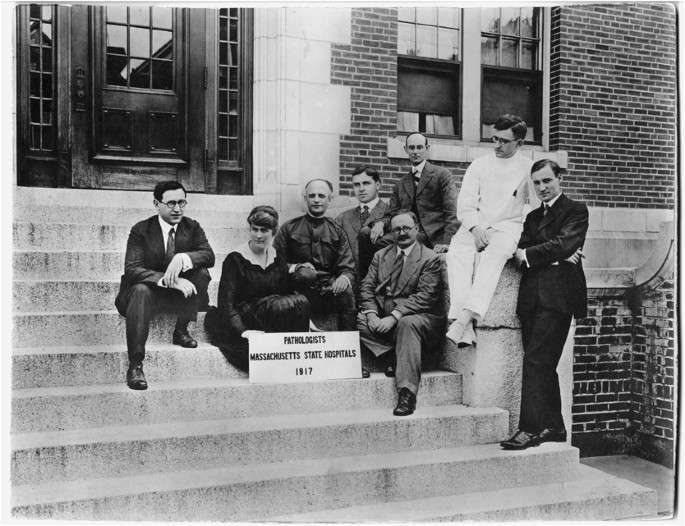A pathologist is a medical professional who analyses bodies and bodily tissues or fluids to search for abnormalities from disease. He or she is also in charge of doing all lab tests performed in hospitals. A pathologist is an integral part of the treatment team who assists other healthcare experts in reaching diagnoses and choosing appropriate treatments.
Pathologists have attended medical school and must have completed at least three-four years of advanced medical education in a residency training program to sit for board certification tests—the American Board of Pathology credentials pathologists.
A pathologist is an essential member of any patient’s treatment team. Nonetheless, the pathologist may be unknown to the patient. This is because a pathologist spends most of his or her time in the lab. A pathologist uses medical expertise and a detective’s Love of mystery to piece together a picture of a disease.
Pathology as a specialty attracts analytical thinkers and problem solvers. Pathologists are meticulous, step-by-step thinkers with an eye for seeing patterns in evidence. Many doctors spend the majority of their time seeing patients. On the other hand, pathologists spend the majority of their time in the lab. A pathologist’s typical day can begin with analyzing collected samples and performing research. Working with lab equipment to analyze samples and obtain results may take up most of the day. A sub-specialty of Pathology known to most people from the television series CSI is Forensic Pathology which focuses on cause of death in criminal cases.
A variety of causes are increasing the demand for additional pathologists. The population is increasing and is also becoming older boosting the demand for all medical services, including pathology. In addition, new Pathology lab tests including PCR and Flow Cytometery have dramatically increased the number and choice of tests that can be performed on patient samples. According to research performed by the College of American Pathologists, most pathologists find jobs immediately after completing their residency, and the majority report high levels of work satisfaction.
Dr. Paul Ernest Love and Clinical Pathology
Dr. Paul Ernest Love is a clinical pathologist and immunologist from the United States. Like many of his pathologist colleagues, Dr. Love chose to obtain both an MD and a PhD to become trained in clinical medicine and research. Dr. Love has over 31 years of experience as a Scientist and is credited with significant research achievements in fundamental science and medicine. Dr. Love works at the National Institutes of Health (NIH), a government institution part of the US Department of Health and Human Services. He is still a key player at the NIH and is well-known in immunology. Dr. Love now serves as the Section Head of Hematopoiesis and Lymphocyte Biology at the Eunice Kennedy Shriver National Institute of Child Health and Human Development (NICHD). His study primarily focuses on T cell antigen receptor (TCR) signaling, with a specific emphasis on the involvement of immuno-receptor-tyrosine based receptors.
Dr. Love began working as an independent investigator at the Eunice Kennedy Shriver National Institute of Child Health and Human Development of the National Institutes of Health in 1993 and was promoted to tenured senior investigator in 1998. From 2000 to 2004, he was an Editor for the Journal of Biological Chemistry. He was also a member of the Editorial Board for BioEssays from 2004 to 2008, and a Section Editor for the Journal of Immunology from 2004 to 2008. From 2009 to 2013, Love chaired the Journal of Immunology Publications Committee, and she has been a member of the FASEB Publications and Communications Committee and an AAI Representative since 2014. Dr. Love served as Reviews Editor for the journal Frontiers in Immunology in 2015 and was appointed Associate Editor for T cell biology in 2020.
Dr. Love’s research team are looking at whether changing the TCR ITAM sequences will increase T cell activation and function, particularly tumor cell killing capacity. As a result, this research looks at whether TCR signal transducing subunits may be ‘tuned’ to improve TCR-mediated cell activation and tumor killing. A second line of study focuses on developing and characterizing a family of molecules called tuning molecules, which operate as a signal regulating proteins to attenuate TCR signals. Though discovered in mice, tuning molecules are also found in human T cells, making them appealing therapeutic targets.
Conclusion
A pathologist is an essential member of any patient’s treatment team and can spend a large portion of his/her time doing clinically related research. A pathologist uses medical expertise and a detective’s Love of mystery to piece together a picture of a disease to assist with the diagnosis and treatment of a variety of diseases.

